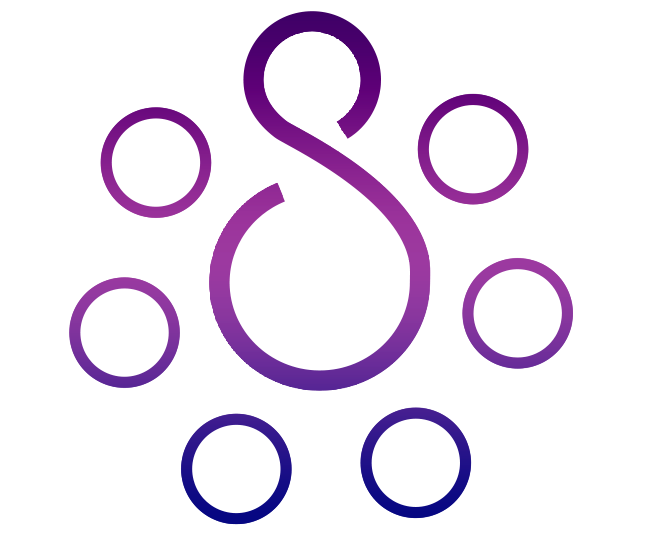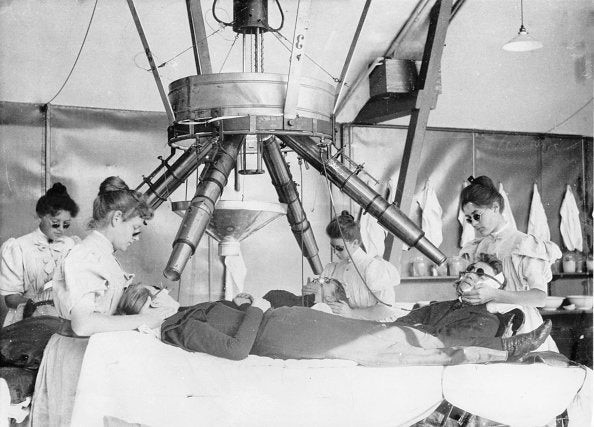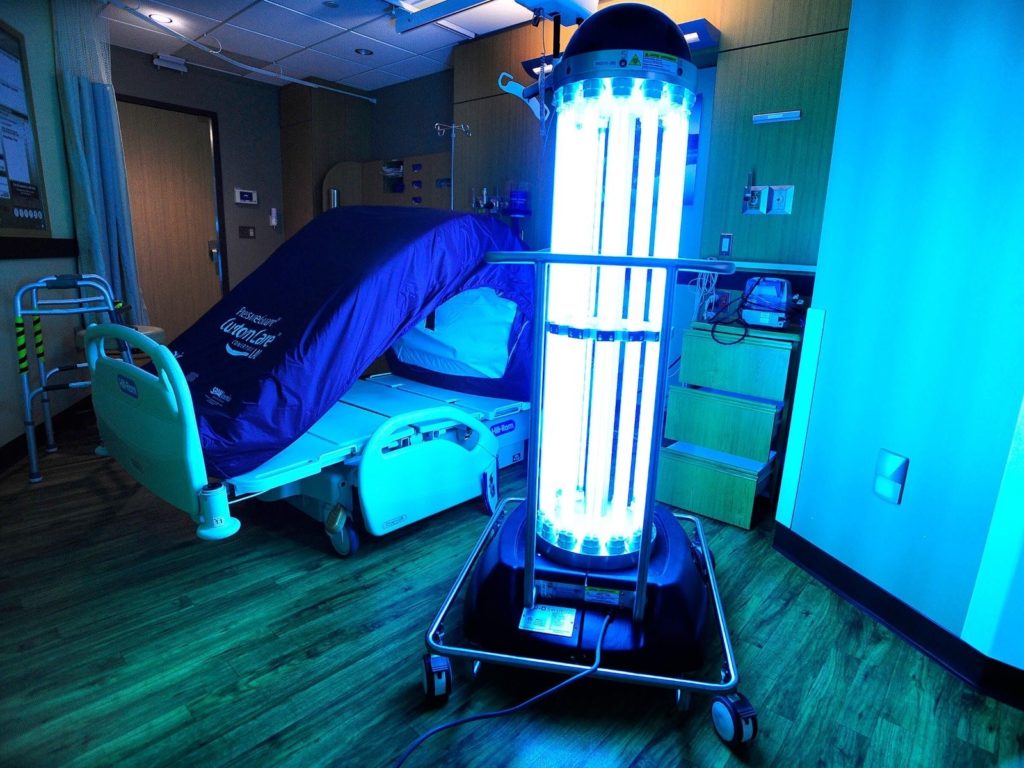In natural sunlight, ultraviolet light may be found in high concentrations and accounts for around 10% of the total light emitted by the planet. Light with wavelengths ranging from 10nm to 400nm is considered ultraviolet (UV) energy, while for germicidal reasons, we concentrate on the wavelengths of UV light. Wavelengths ranging from 10nm to 400nm are considered UV. The ozone in the atmosphere absorbs energy with wavelengths shorter than 290 nm, such that the majority of ultraviolet C and ultraviolet B radiation is prevented by the planet’s ozone. Weather, geographic area, altitude, and time of year may all have an effect on the quantity of ultraviolet radiation that is emitted at a given place. Greater amounts of UV-B and UV-C are able to pass through the atmosphere in regions where there is less atmospheric ozone, such as higher elevations or during the summer months.
The distance between consecutive crests of a wave, particularly points in an electromagnetic wave, is referred to as its wavelength. Visible light has a wavelength range of 400–700 nanometers, which corresponds to the visible spectrum (nm). In physics, the spectrum is a range of colors, such as those visible in a rainbow, formed by the separation of light components due to their various degrees of refraction at different wavelengths. The ultraviolet spectrum of light is comprised of wavelengths ranging from 100 to 400 nanometers (nm). A procedure in which most or almost all microorganisms are destroyed by the use of chemicals, heat, or UV radiation.

The product of the intensity of the light times the period of exposure is used to calculate the dosage, which is the amount of UV energy supplied to bacteria. Different sorts of organisms need different dosages of ultraviolet radiation in order to be inactivated or destroyed. UV-A light has a wavelength in the ultraviolet spectrum ranging from 320 to 400 nm. UV-A light is emitted by black lamps. UV-B: radiation in the ultraviolet spectrum ranging from 280 to 320 nm in wavelength, which is most usually linked with sunburn or freckling, but which also has germicidal properties. UV-C is a kind of ultraviolet light that exists in the ultraviolet spectrum between 200 and 280 nm and is recognized for its germicidal properties. Light having wavelengths of between 400 and 470 nm that has antibacterial properties is known as violet-blue light. A better understanding of UV light helps people become aware of the potential of UV to disinfect and kill germs.
Related Article: Evaluation of an Ultraviolet C (UVC) Light-Emitting Device from the beginning until now
A brief overview of the UV history
In 1879, Downes and Blunt discovered the bactericidal properties of sunshine. It has been 140 years since their discovery. In their research, they discovered that shorter wavelengths of the sun’s spectrum were more efficient in neutralizing germs than longer wavelengths. Just 15 years after his discovery, Professor Marshall Ward discovered that the violet-blue and ultraviolet sections of the spectrum are the most effective at killing germs. Further confirmation of the potential of the ultraviolet spectrum to kill germs resulted in the development of a number of applications for this technology, which ranged from the first UV quartz lamp by Lorch in 1904 to the first overhead UV system for hospitals in 1936, among others.
UV was first used in barracks in 1942 to protect servicemen in the Army and Navy, and it was then approved for use in other military facilities. Studies such as the one done by Riley in 1957 demonstrated the efficiency of employing TB control drugs. Despite high acceptance rates and studies demonstrating its efficiency, UV light has not been widely accepted as would be anticipated, owing in large part to an increase in the use of antibiotics in recent years.
Given the rising worry over antibiotic-resistant types of “superbugs,” UV light is gaining significant traction since bacteria cannot develop a tolerance to the germ-killing ability of UV. So, Understanding of UV light helps individuals become aware of the potential of UV to disinfect and destroy pathogens. In 2000, the Army recommended the use of Ultraviolet Germicidal Irradiation (UVGI) for disease isolation, and just three years later, the Centers for Disease Control and Prevention (CDC) endorsed the use of UVGI in hospitals, and the Federal Emergency Management Agency (FEMA) approved the use of UVGI-based biodefense systems for buildings. As new applications for ultraviolet light for germ elimination are identified, the field of ultraviolet light for germ elimination continues to expand.
Understanding of UV light and how it works
To have a fundamental understanding of UV light and how it kills bacteria and viruses, it is necessary to first comprehend their structure. DNA and RNA are the genetic materials that make up all living things, and they are responsible for directing their growth, development, functioning, and reproductive processes. Deoxyribose (sugar) and phosphate are both present in DNA, as are nucleotides, which are made up of nucleotide bases and nucleotides. Adenine, cytosine, guanine, and thymine are the four chemical forms in which these bases exist. DNA and RNA are genetic materials that serve as the blueprint for cellular development. RNA (ribonucleic acid) is produced after the DNA code has been transcribed. RNA conveys information or instructions and is responsible for controlling protein synthesis. In certain viruses, the genetic information is stored in RNA.
An organism’s DNA is the most sensitive target it can find. Radiation with a wavelength of 200 nm is absorbed by molecules of ribose and phosphate, while nucleotide bases absorb radiation with a wavelength of 265 nm. Microorganisms’ genetic material is altered as a result of exposure to ultraviolet radiation. Because it causes photo-chemical reactions in nucleic acids, electromagnetic radiation kills the capacity of bacteria to reproduce and causes them to die. UV radiation promotes the production of particular thymine or cytosine dimers in DNA and uracil dimers in RNA, which causes the inactivation of bacteria by inducing mutations and/or cell death, as well as the inability to reproduce in the presence of the UV energy.
The oxidation of proteins and lipids caused by ultraviolet B and ultraviolet A radiation results in cell death. Broad spectrum UV lamps have been proven to be effective as well as inhibit photoreactivation, which is a process that may result in the self-repair of injured microorganisms. Furthermore, when UV-A light is disseminated utilizing pulsed UV systems, it has the potential to induce further cell wall rupturing as a result of the rapid heating. So, pulsed UV systems combine not only germicidal effects from providing deadly UV doses but also thermal disintegration from the high speed and intensity of photonic delivery to provide germicidal effects in addition to thermal disintegration.
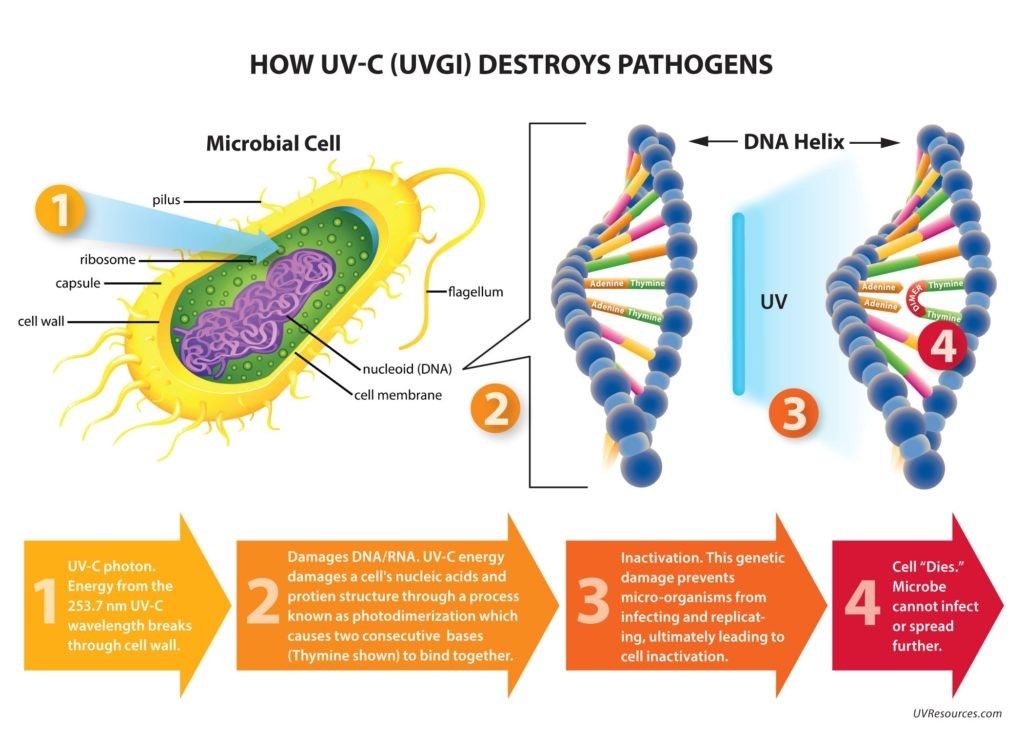
What is the purpose of UV light and why do we need UV?
Every year, millions of people get sick as a result of germs and viruses that they acquire in public areas, which may include anything from restaurants to hospitals to just about any venue. While techniques such as hand washing are important components of our overall defense against illness, they are insufficient in the face of the millions of germs that exist. Many pathogens, like the norovirus, have the ability to live on surfaces for many weeks. Antibacterial products have been popular for many years because people have been searching for an extra layer of protection against germs.
However, the FDA subsequently determined that goods containing specific compounds, such as triclosan, could no longer be sold since the makers had not shown that their products were safe or that they were genuinely any better than using ordinary soap and water on a daily basis. Some studies have even shown that antibiotic resistance may be exacerbated as a result of the use of compounds such as these.
Other chemicals that may be used to clean surfaces are often not utilized as indicated, resulting in the need for longer time durations and, as a result, reducing their efficacy. Therefore, a fundamental understanding of UV light can be used to improve disinfection systems, increase efficiency, and ensure their safety.
The Centers for Disease Control and Prevention (CDC) has identified 18 bacteria as drug-resistant risks that need the development of extra prevention and control measures because of their resistance to antibiotic therapy. Recently, it was discovered that a particular strain of Klebsiella pneumoniae was resistant to all 26 antibiotics now in use in the United States. Bacteria have modified their structures throughout time in order to withstand antibiotic effects, to generate enzymes called beta-lactamases that really degrade penicillin, or to gain drug-resistance via the transfer of genetic material from other bacteria.
UV radiation, on the other hand, has the ability to kill any bacteria, even drug-resistant bacteria, since it is capable of damaging the DNA and RNA of germs. The quantity of ultraviolet light required to kill a microbe may vary depending on the size of the DNA molecules in the organism’s DNA and the impact of UV radiation, but there have been no instances of germs developing a tolerance to light-based killing techniques. When it comes to health and wellness, it’s critical to discover a solution that is simple to use in order to guarantee optimal utilization on a consistent basis, every time.
Aside from having shown outcomes, the solution must also be successful in killing the infections that you are most worried about and wish to target. Check the data carefully, especially when considering UV treatments, to determine the distances at which they may effectively kill microorganisms. Consider not just the initial expenditures but also the continuing expenses, which may include labor costs, supply purchases on an ongoing basis, and/or maintenance costs when picking a solution.
Related Article: Does your child drink water from a private well?
The violet defense distinctiveness
Violet Defense offers a high-quality range of patent-protected solutions that can fulfill your demands for germ-killing in daily environments that are safe, effective, and affordable. With a fundamental understanding of UV light, solutions have been discovered to eliminate surface and airborne germs that are simple to use and can be incorporated into everyday environments with little effort. Violet defense systems are equipped with a sophisticated control system that can automatically adjust cleaning cycles in order to assist in maintaining a consistent degree of cleanliness over a long period of time.
Various deployment strategies may be built into units to allow them to integrate easily into a company’s day-to-day activities. A bathroom fan cover, a whole-room unit, and a transportable alternative are among the products available. When a room is not in use, the units are set to turn on automatically to save energy. There are many safety procedures in place to guarantee that the devices deactivate as soon as someone enters the space. When it is deemed safe to do so, the cleaning procedure will automatically begin once again.
Concerning the Violet Defense
Violet Defense is reinventing what it means to be clean and discovering new ways to safeguard our planet from hazardous bacteria that have become resistant to conventional methods of cleaning and disinfection, such as chlorine. Violet Defense has studied and created cutting-edge technology that may be customized to meet the demands of each person. Based on the established effectiveness of germ-killing light, such as UV and violet blue light, which has been relied upon for more than a century to fight the battle against bacteria, fungus, and mold, as well as viruses, this study will advance the field of germ-killing light. With Violet Defense’s proprietary technique, it is possible to incorporate the technology into almost any product or location.
Bacteria that are resistant to antibiotics
Many of us do not want to think about the germs that surround us on a daily basis, but due to the constant evolution and identification of new germs, as well as rising worries about antibiotic resistance in previously discovered bacteria, we must take additional precautions to protect ourselves. According to government statistics, more than 2 million individuals are sick with germs resistant to antibiotics each year in the United States alone. At present time, the Centers for Disease Control and Prevention have identified 18 microorganisms as drug-resistant risks. In recent years, there has been a resurgence in the use of germicidal light as an additional layer of protection, even though this has been around for a long time. In reality, it’s been more than 140 years since Downes and Blunt discovered the antibacterial properties of ultraviolet light. Therefore, a greater understanding of UV light helps individuals become aware of the potential of UV to disinfect and destroy microorganisms.
related article: What Is a Toothbrush Sanitizer?
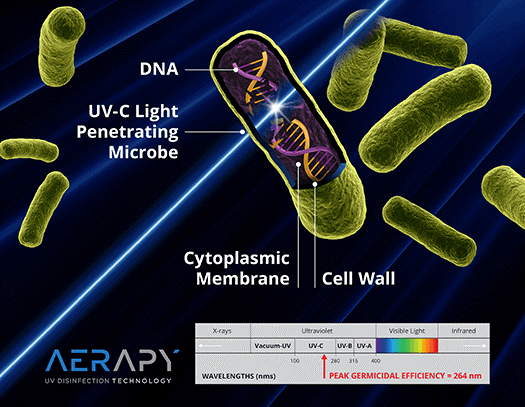
Disinfection using ultraviolet radiation
However, despite the enormous history and study that has been done to understand the germ-killing potential of light, in general, and UV light, in particular, many people are still unaware of or do not completely comprehend the capabilities of ultraviolet light. When used as a germ-killing tool, ultraviolet light is particularly effective because it targets bacteria and viruses at the DNA and RNA levels, preventing germs from developing immunity to it. Many standard UV systems only use ultraviolet C light, but Violet Defense has designed a highly small and cost-effective device that emits pulsed Xenon light that contains UV-A, UV-B, UV-C, and violet-blue light to enhance the germicidal effects of the UV light.
The Violet Defense UV solutions have been particularly designed to provide an additional layer of protection in everyday environments where we come into contact with these hazardous microorganisms. Our installed choices, on the other hand, let the units operate independently, providing you with the protection you want without requiring your participation or work. The benefit of using this method is that it is not only cost-efficient, but it is also very successful, capable of eliminating up to 99.9 percent of bacteria and viruses, including E. coli, Salmonella, MRSA, and norovirus.
Antimicrobial LED light technology that has been patented
This light technique, which was first developed in England in 1892 and used filters and sunlight, has grown to become versatile and very efficient because of the digital tuning capabilities of LEDs. The range and complexity of use cases available are astounding, with food safety being the most prominent. The lights from Vital Vio may be adjusted precisely to target particular regions (across all FSMA Production Zones) where bacteria are present, likely to develop, or likely to be transported to other zones in the food and beverage production industry.
In particular, the fact that Vital Vio has patented a single LED diode for emitting this specialized light allows it to both illuminate large areas such as manufacturing environments while also providing continuous protection inside very small and difficult-to-reach spaces, such as directly within the processing line itself or beneath equipment, is a significant advantage. Antimicrobial light such as Vital Vio is different from ultraviolet light, which is fundamentally hazardous because it assaults DNA and destroys the cellular structure of all living things (including people).
Vital Vio’s technology makes use of a specific light wave that complies with international standards for continuous and unrestricted usage in close proximity to people (IEC24, 2019). There are several benefits to using antimicrobial light as a complementary cleaning method to more standard methods of cleaning. According to studies, Vital Vio’s antimicrobial LED light technology may be utilized on materials such as stainless steel, glass, and plastic surfaces, while ultraviolet light is known to destroy materials prevalent in food and beverage processing facilities. This new family of antimicrobial lights cleans continually as part of a multi-layered defensive system, which includes other antimicrobial lights. As a result, a basic understanding of UV light may be utilized to enhance disinfection systems, boost efficiency, and assure safety.
related article: How UV-C LED Light Can Help your Rental Customers
